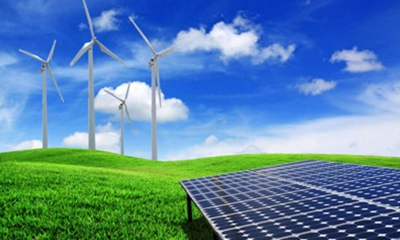By Vishal Gulati
Chandigarh, March 5 (IANS) Aiming to make Punjab carbon-neutral with energy conservation the focus area, the AAP government in the state has tapped 2,227.12 MW capacity renewable energy projects that is about 16 per cent of the total installed capacity.
Of this, 1,493.95 MW capacity solar plants have been installed.
Besides, 462.07 MW co-generation power plants, 91.5 MW biomass power projects, 175.35 MW mini-hydel projects and 1.5 MW waste-to-energy projects have been installed.
These facts came to light in the Governor’s address in the legislative assembly on Friday.
The state is aggressively pursuing the development of compressed bio-gas (CBG) projects that are utilising surplus paddy straw to the tune of 16.54 million tons per annum.
A total of 43 CBG projects having a total capacity of 495.58 tons per day based on paddy straw and other agro-residues have been allotted. They aim for a sustainable solution to prevent stubble burning smog, which blankets the entire northern belt of India, comprising Punjab, Haryana, Delhi and Chandigarh, in October-November.
Asia’s largest CBG plant was inaugurated in October last year by Union Minister of Petroleum and Natural Gas Hardeep Singh Puri and Chief Minister Bhagwant Mann at Bhuttal Kalan village in Sangrur.
Agriculture is an important sector of the state’s economy. Punjab, the grain kitty of India, ensures food security of the nation. Its contribution to the central pool in 2022-23 was 51 per cent wheat and 25 per cent paddy.
As per official figures, 15,820 solar pumps, 103,329 solar streetlights in villages and 178,000 family-size biogas plants have been installed.
As per Governor Banwarilal Purohit’s speech, the state is planning to increase renewable energy to 50 per cent of the installed capacity by 2030 in line with the national agenda for clean-energy sources.
The state annually produces 20 million tonnes paddy straw.
To provide a much-needed alternative to stubble burning, Asia’s largest CBG facility has been commissioned with a foreign direct investment of approximately Rs 220 crore by Germany’s leading bio-energy company Verbio AG.
With a total capacity of 33.23 ton CBG per day, the plant, spread across 20 acres, is consuming 100,000 tonnes of paddy straw that is being procured from within a 10-km radius of the facility.
There is a daily production of around 600-650 tons of fermented organic manure that can be used for organic farming.
The state has constituted a task force to create a mechanism for off-taking of fermented organic manure generated from the CBG projects based on agro-residue.
The Punjab Energy Development Agency (PEDA), a state nodal agency, has allocated 42 CBG projects, aiming to attract an investment of Rs 1,200 crore, besides generating employment opportunities for over 8000 skilled and unskilled people.
As per government figures, the cases of paddy stubble burning have been reduced to 49,922 in 2022-23 from 71,304 in 2021-22. Officials say this has been made possible because of the efforts in ex-situ and in-situ management of stubble, awareness campaigns, monitoring and effective enforcement of the law.
Punjab has produced 191 lakh metric tons paddy in this fiscal.
The government has also decided to solarise 100,000 electric agriculture tubewells. As per official estimates, this will save around Rs 200 crore per annum on account of power subsidy.
PEDA has already invited e-bids for selection of solar power generators for feeder level solarisation of 25,000 grid connected agriculture pumps.
The government provides free power to 14.05 lakh farmers for their grid connected tubewells for irrigation and bears an expenditure of approximately Rs 7,294 crore as subsidy being paid to PSPCL.
To promote energy conservation and showcase the energy efficiency in buildings, the government has decided to construct a super Energy Conservation Building Code (ECBC) compliant building in Mohali, near the state capital.
This building will be constructed within two years and will install state-of-the-art technologies for public awareness.
The government has also decided to install solar power photovoltaic (PV) projects with a total capacity of 300 MW. They include 200 MW canal top solar PV projects and 100 MW floating solar projects on reservoirs and lakes.
The 200 MW canal top projects will be installed in phases in build, operate and own (BOO) mode. PEDA estimates to install 50 MW in the first phase with an expected cost of Rs 5 crore per MW. The 200 MW canal top projects are expected save at least 1,000 acres of agricultural land.
The cost of the floating solar projects is Rs 4.80 crore per MW.
State New and Renewable Energy Sources Minister Aman Arora has written to the heads of all government departments to seek their consent for installing solar photovoltaic panels on the rooftops of the buildings under Renewable Energy Services Company (RESCO) Mode.
Also, the heads of departments have been asked to appoint a senior officer of their department as a nodal officer to coordinate with PEDA to smoothen the process of solarising the buildings.
PEDA has already installed solar PV with a total capacity of 88 MW on the rooftops of government buildings.
(Vishal Gulati can be contacted at gulatiians@gmail.com)
–IANS
vg/bg





